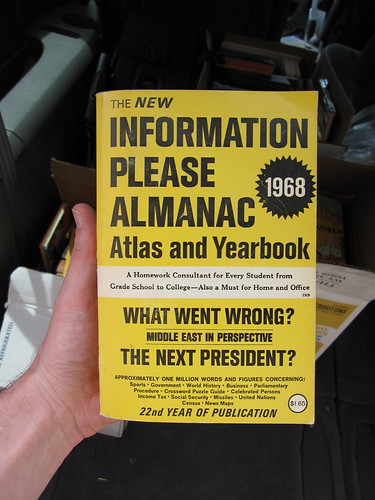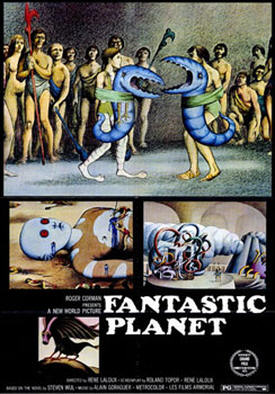As far as I can recall, I first heard about mind mapping on Twitter from Howard Rheingold, whose explorations in communication are always worth attending to. And not too long ago, I came across a blog post on mind mapping, THE USAGE OF MIND MAPPING METHODE IN READING, from a blog for the University of Ibn Khaldun Bogor of Indonesia, and was interested to learn that there was a connection to general semantics. The post contains a paper by Novita Sari Asmiaty, who notes that the inventor of the modern mind map, Tony Buzan, says he got the idea from Alfred Korzybski's general semantics, which I find quite intriguing, but also that the history of the mind map can be traced back to, among others, the medieval Spanish philosopher, Ramon Llull.
Llull is associated with the technique of the memory theater, as discussed by Francis Yates in The Art of Memory, a book well known to many media ecology scholars, including Walter Ong, and memory is part of Buzan's concept of mind mapping, it is important to note. This mnemonic technique relies on the fact that visual images help us to remember verbal content. In the most basic kinds of nomadic tribes, the tendency is to follow the same route around and around, rather than wander aimlessly, and certain objects along the route, say a particular mountain, boulder, river, lake, tree, etc., would be considered sacred, invested with meaning, and used to help retain knowledge vital to the tribe's survival. John Pfeiffer, in his book, The Creative Explosion, believes that prehistoric cave painting, and the caves themselves, served the same function, as the first memory theaters. Last November, I was pleased to serve as respondent for the first Marshall McLuhan Lecture set up by the Society for the Study of Symbolic Interaction, and held at the annual meeting of the National Communication Association. The lecture was given by Australian researcher Lynne Kelly, of the University of La Trobe, the topic was Stonehenge, and this was the first time that she made her argument for understanding Stonehenge in terms of orality-literacy studies (and media ecology), and seeing the mysterious monuments (and many others like it all over the world) as a kind of memory theater. For a little more on this, here's her university's press release: Mystery of Stonehenge Solved?
I find it interesting to note that the diagram of the divine, known as the Tree of Life, from the Kabbalah, is also considered a kind of memory theater:
Here's a fascinating look at the Tree of Life in this respect: A Memory Theater. Of course, the Zodiac, with its "houses" is a type of memory theater as well, and Shakespeare's Globe Theatre also fits that bill.
Lest this all seem entirely occult and unscientific, it is worth noting that Llull's philosophy is also considered a forerunner of computer science, influencing in turn the modern philosopher Gottfried Liebniz. Of course, the Kabbalah, especially the Gematria, gave us numerology, which can be considered an early form of digitization.
But the point here is not the quantification of knowledge, but its visual display, and while there is common ground in geometry, the main event is the mapping of thought. This begins with writing of course, and the simple idea of the list, as discussed by Jack Goody in The Domestication of the Savage Mind (required reading for any self-respecting media ecologist), might be considered the first mind map.
And in this respect, an important individual whose name is curiously omitted in these discussions is the early modern French educator, Peter Ramus, the subject of Walter Ong's PhD dissertation, and his first major book, Ramus, Method and the Decay of Dialogue. Ramus developed a technique for the visual display of knowledge where you begin with a concept, divide it into two opposites, divide each one into two, and so on. For example, beginning with living things, you might divide them into plants and animals, divide animals into vertebrates and invertebrates, divide vertebrates into cold and warm blooded, etc. Ong explains that this visual dialectic replaced oral dialogue as the basis of education in much of the west, and was especially influential in Protestant countries. In fact, it was the basis of Puritan education in colonial New England, and form there became the foundation of American education in general. Ramism represents a shift in emphasis, not only to visualism, but to facts rather than arguments, and to education by the book, and for the first time by a new form that we call the textbook, rather than by the teacher. From a general semantics point of view, Ramist method comes across as an extreme example of a two-valued orientation, whereas general semanticists recommend employing a multi-valued orientation. But we can also recognize in Ramism a forerunner of binary logic, information theory, and the basic binary unit, the bit.
As many historians of printing have noted, along with Gutenberg's printing press, the concurrent development of techniques for engraving on printing plates, and then etching, led to a revolution in the production and distribution of visual images, including diagrams as well as illustrations. And maps. It's no accident that the Age of Exploration follows on the heels of the printing revolution (see my earlier posts on this subject, One Hell of a Misnomer and Columbus Hot, Vespucci Cool).
All this eventually leads to diagrams of electrical circuitry, and then to computer programs, which are a kind of artificial mind map. And computers, in turn, facilitate the graphic display of information in unprecedented fashion, often leading to very poor forms of diagramming. Among the worst offenders are the purveyors of PowerPoint presentations:
And of course the leading expert on the visual display of information is Edward Tufte, whose website and work is well worth our attention. He's particularly incisive on the subject of graphing and the visual display of quantitative information, and has produced quite the critique of PowerPoint. I'm not aware of anything Tufte has written on mind mapping, though.
The wikipedia entry on the Mind map reflects some disagreement on its modern origin. One sentence attributes it to Tony Buzan, who represents a rather fascinating combination of psychology, language, memory, poetry, computing, and education. The entry itself says the following about Buzan: "He claimed the idea was inspired by Alfred Korzybski's general semantics as popularized in science fiction novels, such as those of Robert A. Heinlein and A. E. van Vogt. Buzan argues that while 'traditional' outlines force readers to scan left to right and top to bottom, readers actually tend to scan the entire page in a non-linear fashion. Buzan also uses popular assumptions about the cerebral hemispheres in order to promote the exclusive use of mind mapping over other forms of note making." For more on Tony Buzan, you can check out Buzan World.
But a separate paragraph in the wikipedia entry on the Mind map contradicts what is said about Buzan, which is a paradox generated by collective social media authorship. That section reads: "The semantic network was developed in the late 1950s as a theory to understand human learning and developed into mind maps by Allan M. Collins and M. Ross Quillian during the early 1960s. Due to his commitment and published research, and his work with learning, creativity, and graphical thinking, Collins can be considered the father of the modern mind map." Holding aside the quibbles about paternity and patents (this does all go back to the the invention of lists in the antiquity, after all), it is fascinating to note another reference to semantics here, albeit not of the general variety. And I do like the phrase, semantic network. Here's an illustration of one:
Now, the wikipedia entry on the Semantic network says that "'Semantic Nets' were first invented for computers by Richard H. Richens of the Cambridge Language Research Unit in 1956 as an 'interlingua' for machine translation of natural languages. They were developed by Robert F. Simmons at System Development Corporation in the early 1960s and later featured prominently in the work of Allan M. Collins and colleagues." And in jumping around like this, I'm actually illustrating a bit of semantic neworking, and yes, it is a forerunner of hypertext, as well as the basis for artificial intelligence programming (aka expert systems). And it is therefore connected to the idea of the semantic web, which is about bringing together AI and the web, or teaching meaning to computers to give us an intelligent internet. Put it all together, and the net, the web, cyberspace and virtual reality, all of it represents one enormous, collective mind map.
So, while the roots of mind mapping can be traced back to the ancient world, it is electric technology, computers, and digital media that facilitate the process, and that also introduce a decentralized networked approach to the subject, as opposed to the linearity of lists and outlines, and Ramist visualism. The if-then logic of the electric circuit board and computer flow chart can be transferred to the organization of ideas and knowledge, to thinking, which is about chains and networks of associations, a nonlinear process that in some ways retrieves aspects of oral culture and mnemonics.
Simply put, while the line was the fundamental organizing principle of the past 5500 years of writing cultures, we have now added, to the simplicity of the line, and its rectilinear frame, the complexity of the network. The network is the fundamental organizing principle of our new era.
So, Wikipedia, great mind map that it is, has a page providing a List of Mind Mapping Software, in case you're interesting in checking any of it out. Howard Rheingold mentioned the freeware program FreeMind, which I have downloaded and tried out a few times. To be honest, I haven't really taken to it. While I do think in terms of ecological interrelationships, I'm used to jotting ideas down on a pad, and then find a linear way to arrange the ideas. I suppose I'm pretty much a part of the old literate culture, and additionally, I'm just not that much of a visual thinker when you come down to it. But maybe I need to try out Tony Buzan's more sophisticated iMindMap software instead.
Whatever the case may be, it all comes down to the mind being a territory that we are at once intimately acquainted with, and at the same time find difficult to navigate. And so, one of the great tasks that we have been engaged in, for all of human history, is the mapping of the our own minds. The enormity of it all leaves me feeling, well... a little bit lost...


















